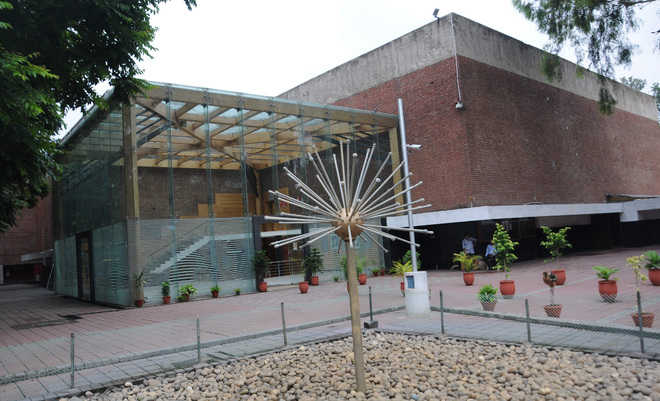
Mukul Bansal
Our rich and varied cultural heritage has a profound power to build our nation. — Nelson Mandela
Tagore Theatre is an oasis in Chandigarh in the field of varied forms of art. Being the only theatre in Chandigarh for a long time, it had become an important hub of cultural activities for the citizens of Chandigarh. Now it has been converted into an auditorium.
It is a centre for cultural performances and was designed by architect Aditya Parkash.
The idea to build Tagore Theatre in Chandigarh sprung up when the Central government decided in the birth centenary year of Rabindranath Tagore in 1961 to build ‘rangmanches’ in every state capital. It started functioning in 1962.
“There were many old cities at that time like Jalandhar, Amritsar, Patiala, Ambala and Karnal, but the Tagore Theatre was established in Chandigarh. The North Zone Cultural Centre was established in Patiala much later in 1985, whereas most cultural activities take place in Chandigarh, “ says Virendra Mehendiratta, Hindi short-story writer and one of the founders of Abhinet, a theatre group.
“The late Aditya Parkash, the then principal of Chandigarh College of Architecture, was closely associated with Chandigarh. The Tagore Theatre was designed by him after studying different theatres of the world. In Sanskrit theatre, half the auditorium is known as the prekshagraha (for the audience) and the other half is where the actors perform. Balwant Gargi had once staged “Sultan Razia” here in the cyclorama (with the backdrop of a white screen) form,” says Mehndiratta.
He goes on to add, “In later years, the Tagore Theatre was unexpectedly pulled down. It was demolished except for retaining its exteriors, so from the outside, it looks about the same. It’s a question of heritage. Earlier, the architecture and other aspects of the theatre bespoke of a democratic country. There were cane chairs in the auditorium and not the cushioned ones as at present. I feel that on the pattern of Chandigarh and Naya Chandigarh, there could have been the old Tagore Theatre (to preserve heritage) and New Tagore Theatre.”
Kamal Arora, Chairman of the Chandigarh Sangeet Natak Akademi and former principal of Tagore Niketan, a drama school, says, “Aditya Prakash was handling the Tagore Theatre project. At that time, Le Corbusier was also in Chandigarh. He approved the designs of the Tagore Theatre. Aditya Parkash was one of the founders of the Abhinet theatre group. He had also directed some plays. The purpose of locating the Tagore Theatre in Sector 18, Chandigarh, was that it was a central sector. There were about three sectors then.”
Arora further says that the design and the acoustics of the theatre were excellent. If you snapped your fingers at one end of the auditorium, the sound could easily be heard at the other end. Us zamane ki best lights thi (there was the best lighting system of those times). There were a lot of protests, for example by the Stage Arts group and the Tagore Art group when the Tagore Theatre was demolished. Theatre lovers also staged dharnas.
In the new theatre, there were 578 seats which have now increased to 800 approximately. In this very space, a balcony could have been constructed. Earlier, the green rooms were good. There was no need to change the structure of Tagore Theatre. The performing area and the spectators’ gallery were interchanged in the new design. There were vehement protests from theatre buffs and practitioners of the art.
The acoustics in the earlier structure were excellent. There was no need for a microphone. They were rough and black, a conducive medium for sound. Now, they are wooden in colour, which may not be an improvement. There is a false ceiling because of air-conditioning. The light booth is so far away so that the stage is not fully visible.
Sometimes the viewers don’t have a clear sight of the corners of the stage, depending on where they’re sitting.
Some years ago, in Sector 34, Chandigarh, the UT administration planned to build a 1,000-seat theatre. The basement is still there. Rs 9-10 crore was spent on the project but it got stuck at that stage.
When it was being planned that the Tagore Theatre would be demolished and built anew, Aditya Parkash, the original architect, was not consulted. His views were not cared for, says Arora.
He died a heart-broken man.



























